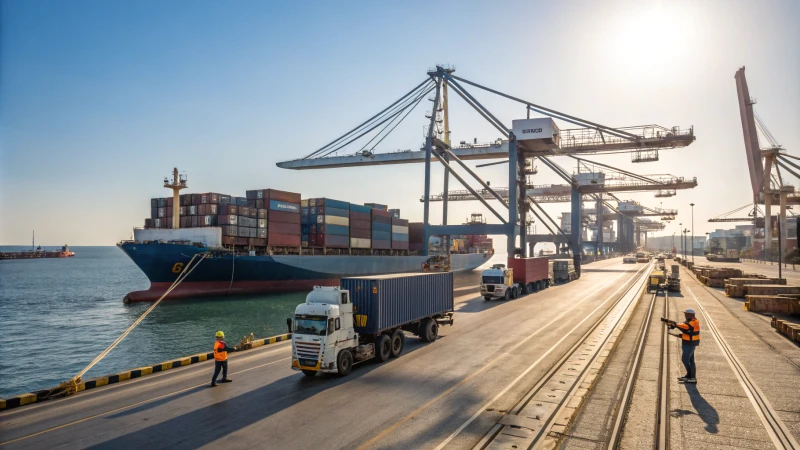Ever wondered how your goods get from the ship to your doorstep so smoothly?
Drayage services are like the unsung heroes of logistics, handling the short-haul transportation of goods, usually in containers, from ports to other modes of transport like trucks or rail. This process is vital for ensuring seamless cargo transfers and keeping supply chains efficient.
For me, diving into drayage was like unlocking a hidden layer of logistics magic. Picture this: you've just imported a batch of electronics from China, and as they arrive at the bustling port, you need a swift and reliable way to get them onto trucks heading for retailers across France. That's where drayage steps in, bridging that critical gap effortlessly.
Understanding drayage isn't just about grasping logistics jargon—it's about seeing how it integrates into the broader tapestry of supply chains. From cost implications to strategic benefits, mastering this aspect can significantly streamline operations. Whether you're shipping a few gadgets or a container full of tech treasures, knowing the ins and outs of drayage can make all the difference.
Drayage services only occur at ports.False
Drayage involves short-distance transport, not limited to ports.
Drayage optimizes supply chain efficiency.True
It facilitates seamless cargo transfer between transportation modes.
How Does Drayage Work in Shipping Logistics?
Ever wonder how goods make their way from ports to your favorite local stores? That's where drayage steps in, seamlessly linking the vast world of shipping logistics.
Drayage is the short-distance transport of containerized cargo, essential for moving goods between different modes of transportation, like from ships to trucks, often within ports or distribution centers.
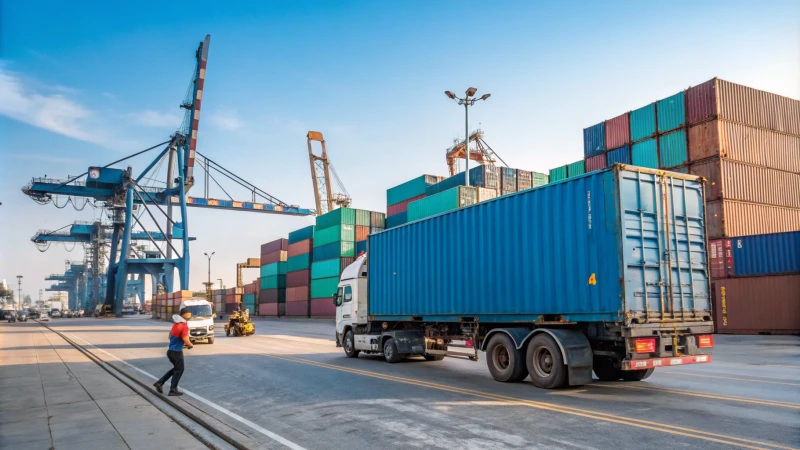
The Role of Drayage in Shipping
Have you ever thought about the journey your favorite electronics take before they reach the shelves? As someone who's been in the import/export game for a while, I can tell you that drayage is the unsung hero that makes this all possible. It's like the crucial first and last mile of a marathon, connecting long-haul transportation with local delivery. When I think back to my early days, I remember the endless hustle of picking up containers from ports or rail yards, just to get them to nearby warehouses on time.
-
Primary Functions:
Function Description Container Pick-up Drayage trucks collect containers from ports or rail yards. Local Delivery Goods are transported to nearby warehouses or destinations.
Key Components of Drayage
Understanding drayage is like piecing together a puzzle; each component plays a pivotal role. Back when I started, I learned the hard way how crucial it was to have the right equipment and expertise on hand.
- Equipment Used:
- Chassis: Drayage often utilizes specialized chassis to transport containers. Learn more1 about how chassis types impact drayage.
- Trucks: Equipped for short hauls, these trucks ensure quick loading and unloading.
Types of Drayage Services
The variety in drayage services is akin to having a toolbox with the right tools for any job. Over time, I've learned which type suits specific needs—whether it's a quick shuttle to avoid port congestion or expedited delivery for time-sensitive shipments.
| Drayage Type | Purpose |
|---|---|
| Intermodal Drayage | Connects rail services with other transportation methods. |
| Shuttle Drayage | Moves containers short distances within the same area, often avoiding congestion at ports. |
| Expedited Drayage | Provides fast delivery for time-sensitive shipments. |
| Pier Drayage | Involves moving goods from a port to a nearby destination. |
Challenges in Drayage Operations
Navigating the challenges of drayage can feel like steering a ship through stormy seas. Port congestion and regulations can throw a wrench in the works, but over the years, I've seen how adept logistics companies navigate these challenges2 to keep things moving smoothly.
- Port Congestion: Managing heavy traffic at ports can delay drayage operations.
- Regulations: Different regions impose varied regulations impacting drayage operations.
The Future of Drayage in Logistics
As technology evolves, so does drayage, offering new ways to overcome old obstacles. I'm excited about the future, with automation and sustainability paving the way for innovations that will surely redefine how we manage logistics. It's an exciting time to be part of this industry and to witness firsthand how innovations in drayage3 are shaping our world.
Drayage is only used for long-haul transportation.False
Drayage handles short-distance freight movement, not long-haul.
Chassis are essential for drayage operations.True
Chassis are used to transport containers in drayage services.
What Are the Different Types of Drayage Services?
Ever wondered how your imported gadgets make it from the bustling ports of China to your doorstep? Drayage services are the unsung heroes in this logistical dance, ensuring every piece of your cargo puzzle fits perfectly.
Drayage services include Intermodal, Pier, Expedited, Shuttle, and Door-to-Door drayage. Each one is tailored to specific logistics needs, making them crucial for moving cargo efficiently between ports, warehouses, and distribution centers.
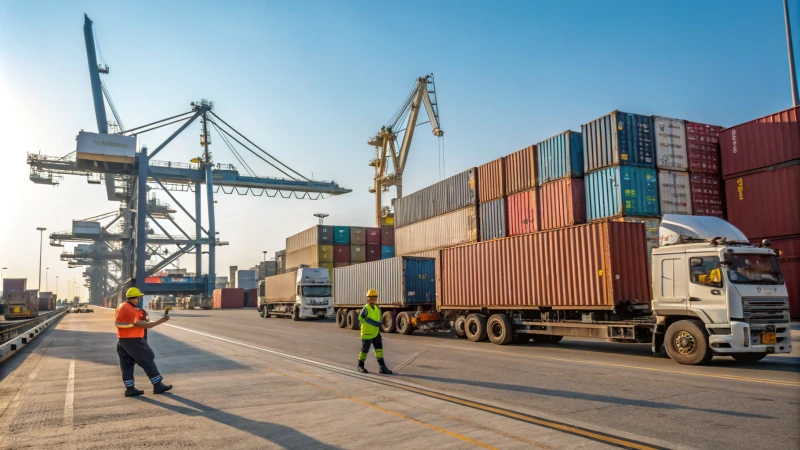
Intermodal Drayage
Imagine being at a train station, waiting for a connecting train to take you to your final destination. That’s exactly what intermodal drayage does for cargo—it connects different transport modes seamlessly. This service has saved me countless headaches and dollars by reducing long-haul trucking costs and ensuring my shipments reach their destinations on time.
| Feature | Description |
|---|---|
| Efficiency | Connects rail to final destinations efficiently |
| Cost-effective | Reduces long-haul trucking costs |
| Versatility | Suitable for various cargo types |
For more insights on how intermodal drayage impacts logistics4, consider exploring its benefits further.
Pier Drayage
Pier drayage is like the calm before the storm—a critical step where incoming goods are swiftly moved from ships to nearby storage or transport facilities. I often rely on this service to prevent congestion at the ports, which could otherwise delay my shipments and disrupt my supply chain.
| Benefit | Impact |
|---|---|
| Quick Turnaround | Minimizes port congestion |
| Flexibility | Adapts to varying port schedules |
Learn how pier drayage contributes to port efficiency and cargo flow5.
Expedited Drayage
If you’ve ever had to rush a package last minute, you know the stress of needing speed over cost. Expedited drayage is my go-to when shipments are critical and timelines are tight—it’s like having a VIP lane just for your cargo.
To explore the dynamics of expedited drayage and its advantages6, delve into case studies highlighting its impact.
Shuttle Drayage
Think of shuttle drayage as a short-haul taxi service for containers—perfect for those short trips within the same complex or between close facilities. This service helps me optimize my resources by cutting down on empty trips, keeping operations efficient and costs low.
Discover how shuttle drayage optimizes logistics operations7 in container yards and distribution centers.
Door-to-Door Drayage
The best thing about door-to-door drayage? It’s like having a personal concierge for your shipments, handling everything from start to finish. This service simplifies my logistics process, offering a one-stop solution that ensures my products are delivered directly from the port to my clients.
- Advantages:
- Streamlined coordination
- Reduced handling times
- Enhanced customer satisfaction
For further reading on the benefits of door-to-door drayage services8, check out expert analyses.
Understanding these diverse drayage services has been a game changer for my business. By picking the right service for each shipment, I’ve managed to enhance my supply chain efficiency, keeping me competitive in the fast-paced world of global trade.
Intermodal drayage reduces long-haul trucking costs.True
Intermodal drayage connects rail and truck, optimizing transport costs.
Pier drayage is primarily used for long-distance transport.False
Pier drayage moves cargo short distances from ports to nearby areas.
Why Is Drayage Important for Supply Chain Efficiency?
Ever wonder how your favorite gadgets make it to your local store so smoothly? The secret is in something called drayage, a crucial yet often overlooked step in the logistics chain.
Drayage refers to the short-distance movement of goods, typically within port areas, acting as a crucial connector between transportation modes. It reduces costs and prevents delays, ensuring seamless supply chain operations.
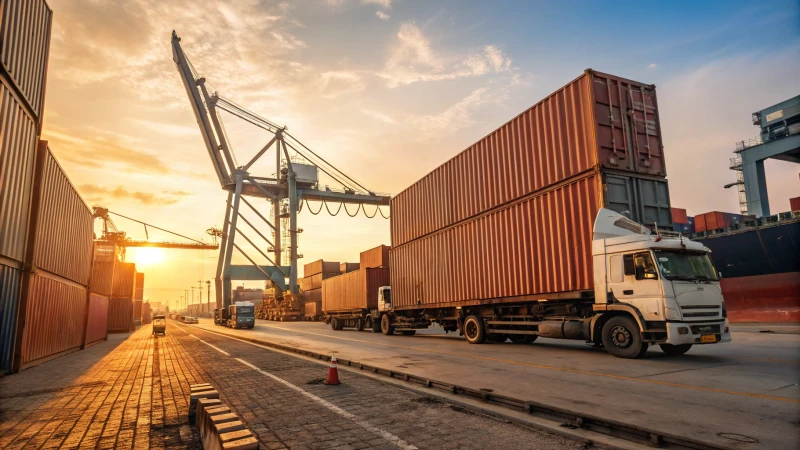
The Role of Drayage in Supply Chains
Let me take you on a little journey back to one of my busiest seasons, a time when I was juggling multiple shipments from China for my electronics business. As I stood watching a container ship unloading at the port, I marveled at how those massive containers would soon transform into the latest tech gadgets on store shelves. But what I quickly learned was that it's the drayage services that bridge the gap between the ship and the next phase of transport, like trucks heading to warehouses or distribution centers. It's like having an unsung hero in your logistics team, making sure everything transitions smoothly and without a hitch.
Imagine a scenario where these connections didn't exist. Our entire supply chain would come to a screeching halt, with goods piling up at ports, facing delays that could ripple down to missed delivery deadlines. This is why effective drayage isn't just helpful—it's essential to prevent bottlenecks and keep everything flowing smoothly.
Cost and Time Efficiency
The financial side of logistics can't be ignored either. I remember running through calculations late at night, trying to balance budgets and cut unnecessary expenses. Drayage services have been a lifesaver in this aspect. By ensuring that goods move swiftly from congested ports to their next stop, drayage reduces those dreaded port fees and storage costs that can add up significantly.
I once had a shipment delayed due to a hiccup in coordination, and the fees were staggering. After that experience, optimizing this short-distance movement became a priority. With efficient drayage, not only do we save on costs but we also ensure our products are ready for the market faster, keeping our customers happy and our bottom line healthier.
Consider how cost savings9 from reduced port fees impact our operations positively.
Enhancing Flexibility and Adaptability
Drayage also offers incredible flexibility. I recall a particularly hectic week when an unexpected order came through from one of my largest clients. The pressure was on to deliver quickly, and thanks to the agility of drayage services, we were able to expedite the shipment from the port directly to their doorstep.
Moreover, drayage providers often have extensive networks that allow them to pivot swiftly when unexpected situations arise—be it a sudden port strike or bad weather. This adaptability has kept my business running smoothly even during the most challenging times.
This flexibility ensures businesses maintain10 smooth operations despite unforeseen events.
Implementing Efficient Drayage Solutions
To truly harness the power of drayage, partnering with seasoned logistics experts is key. I've found that working closely with those who understand local transportation intricacies can make all the difference. Technologies like GPS tracking and real-time data analytics have further revolutionized how I manage shipments, giving me insights into transit times and potential roadblocks before they become issues.
| Here's how effective drayage implementation benefits us: | Benefit |
|---|---|
| Reduced Costs | Minimizes storage and detention fees at ports |
| Improved Efficiency | Shortens transit times between transport modes |
| Increased Flexibility | Allows for rapid response to urgent delivery needs |
Understanding and optimizing drayage has been transformative for my business's supply chain efficiency. This critical service ensures our goods glide through each stage of the logistics process, enhancing customer satisfaction and ultimately supporting our growth and success.
Drayage reduces port storage costs.True
Drayage moves goods quickly, reducing port fees and storage charges.
Without drayage, supply chains remain unaffected.False
Without drayage, bottlenecks occur, causing delays and higher costs.
How Do Drayage Costs Compare to Other Transport Modes?
Ever wondered how that last-mile cargo journey, known as drayage, impacts your logistics budget? Let's dig into the costs and see how they compare with other transportation modes.
Drayage costs are often higher per mile than those for long-haul trucking or rail, primarily due to their specialized nature and the short distances covered. This service is vital for shifting goods between various transportation modes.
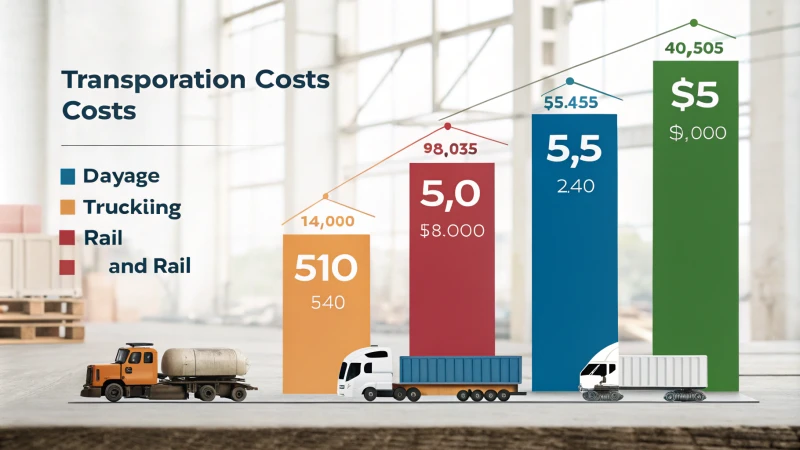
Understanding Drayage Costs
I remember when I first started dealing with drayage; it was like stepping into a whole new world of logistics. This short-distance transport, often within bustling ports or between nearby facilities, can be a real game-changer. You see, drayage is all about those short hauls—moving containers from ships to warehouses11 or railheads. It's a bit like those crucial final touches when you're painting a room; they're small but make a huge difference. Naturally, the cost per mile is higher because of this specialization and short distance.
| Transport Mode | Average Cost Per Mile |
|---|---|
| Drayage | $20-$30 |
| Trucking | $1.50-$3 |
| Rail | $0.05-$0.15 |
Factors Influencing Drayage Costs
Think of drayage like your favorite espresso shot—short and intense. Several factors come into play, such as the type of cargo, distance, and those pesky port fees. Once, during a particularly busy season, port congestion12 turned my logistics plan upside down, racking up costs because of waiting times.
Comparison with Trucking Costs
Long-haul trucking is like the workhorse of transport—offering lower per-mile rates due to economies of scale over longer stretches. However, integrating it with maritime logistics isn’t as smooth as drayage. Despite its cost, drayage remains indispensable.
Rail vs. Drayage: A Cost Perspective
Rail is undoubtedly the king of cost-effectiveness over long distances. Yet, it lacks flexibility for those initial or final delivery stages where drayage excels. The intermodal transport13 system relies on drayage to seamlessly connect these dots.
In the end, each transport mode carries its own set of pros and cons. The trick is finding the right balance for your logistics needs and cost priorities. Every shipment feels like a puzzle piece falling into place when you get it just right.
Drayage costs are higher per mile than trucking.True
Drayage costs $20-$30 per mile, while trucking is $1.50-$3.
Rail transport costs more per mile than drayage.False
Rail costs $0.05-$0.15 per mile, cheaper than drayage.
Conclusion
Drayage services facilitate the short-distance transport of containerized goods between ports and other transportation modes, ensuring efficient supply chain operations and timely deliveries.
-
Understand how different chassis types affect drayage efficiency. ↩
-
Learn strategies to tackle common drayage obstacles effectively. ↩
-
Explore cutting-edge technologies transforming drayage logistics. ↩
-
Understanding intermodal drayage's role in logistics can enhance shipping strategies by connecting different transport modes effectively. ↩
-
Pier drayage improves port efficiency, making it crucial for managing large volumes of imported goods swiftly. ↩
-
Expedited drayage ensures timely delivery for urgent shipments, crucial for businesses with tight schedules. ↩
-
Shuttle drayage minimizes empty trips, enhancing resource utilization within short-distance transport. ↩
-
Door-to-door drayage simplifies logistics coordination, reducing handling times and improving customer satisfaction. ↩
-
Discover how efficient drayage reduces costs by minimizing port fees and storage charges. ↩
-
Learn how flexible drayage solutions keep your business running smoothly amidst disruptions. ↩
-
Explore how warehouses play a role in drayage operations and impact costs. ↩
-
Understand how port congestion affects drayage costs and logistics efficiency. ↩
-
Discover the benefits of intermodal transport systems and their reliance on drayage. ↩

